Sea Surface Temperatures are High: Good Chance for Another Record Weather Year
Let’s see what some recent climate science data, “tea leaves,” have to say about Earth’s immediate climate forecast. However, let’s review some background information first.
The oceans, which cover about 70% of Earth’s surface, have absorbed about 92% of the excess heat that results from the high levels of greenhouse gases [GHG] in our atmosphere. Humans have largely escaped the effects of all of this heat, for the moment.
Basically, the Earth has a heat imbalance. More heat is now being retained/trapped in our atmosphere [and oceans] than is escaping to outer space. The current level of carbon dioxide in the atmosphere is now 424 parts per million [ppm]. This compares to a level of about 280 ppm at the start of the Industrial Revolution in the middle 1700’s.
The 50% increase in this GHG is the problem and is the highest concentration in over 2 million years.
Next note the graph titled, “Daily Sea Surface Temperature 60-degree S – 60-degree N.” The information comes from a variety of sources as shown including the European Union and other research institutes.
So now the tea leaves.
The very hot, and at times smoky, summer and year 2023, set records for high annual temperatures, billion-dollar weather disasters and more. From this graph we see that the 2023 sea surface temperatures were higher than any previous year in the data record up to that time. Indeed, we see that it set a record in late August 2023.
But now look at the temperature for 03 Feb 2024 [21.1 degrees C or 69.9 degrees F]. This is the highest temperature ever recorded. We also know that January 2024 was the warmest January globally on record.
The ocean is not just a little bit warmer … but a lot.
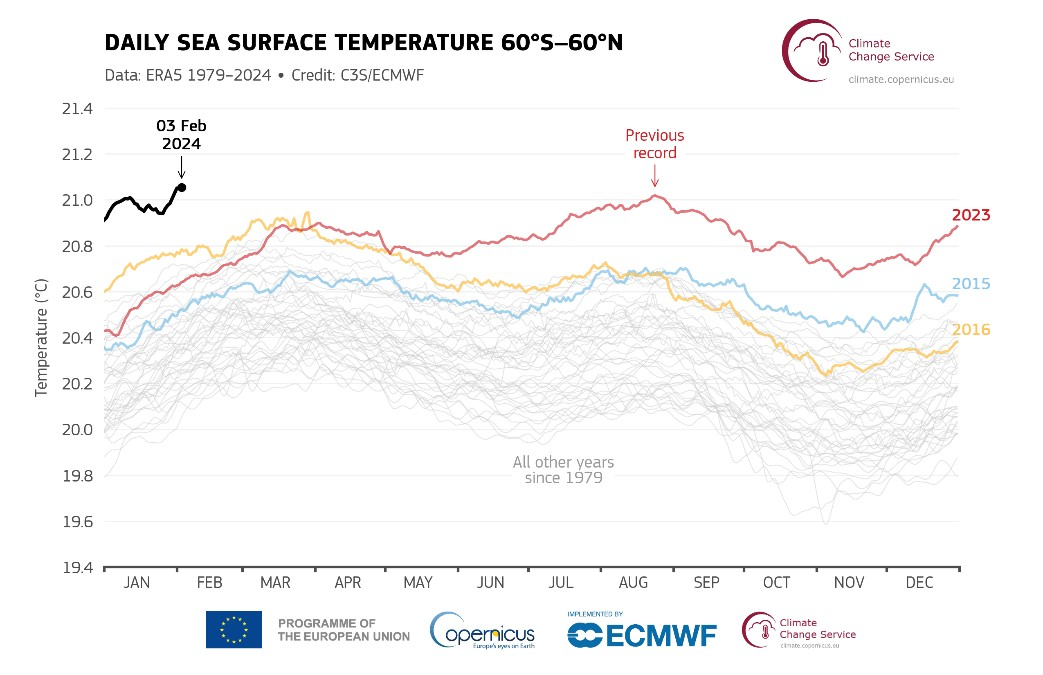
And all that heat has lots of implications from a weather perspective. It can change wind patterns causing drought, intense rainstorms, hurricanes, and all other kinds of extreme weather.
The record-breaking ocean temperature shown in the graph strongly suggests that 2024 will be a very “hot” and busy year weather-wise.
So much for the “tea leaves.”
Fortunately, the Biden administration has had two very important legislative accomplishments. The Infrastructure Investment and Jobs Act in 2021, and the IRA [Inflation Reduction Act] in 2022. These two pieces of legislation include many billions of dollars of incentives, tax breaks, subsidies, and more.
Make no mistake, this is a big deal. The intent is to invest in transportation, promote electric vehicles, invest in our roads, bridges, and energy projects to retool, repower or replace outdated energy infrastructure and promote clean energy.
Two-thirds of the GHG we emit in the U.S. comes from transportation and electricity. These two bills address both sources. It is not a cure-all, but it is a very strong start on addressing our carbon emissions problem.
Note the bar chart titled, “U.S. planned utility-scale electric-generating additions (2024).”
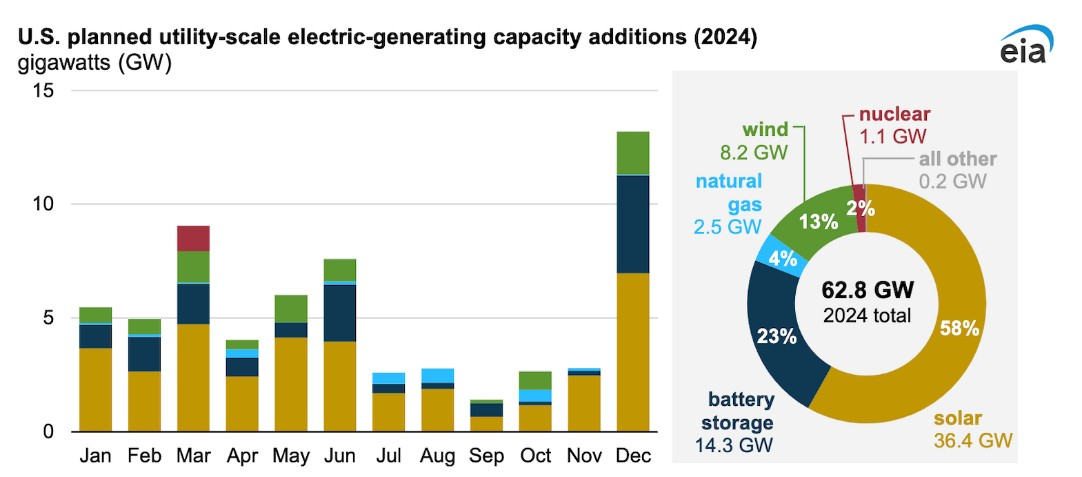
The numbers in the circular portion are impressive. With just 4% from natural gas, and 2% from nuclear, all the remaining will come from wind, solar, and battery storage. Each monthly bar in the chart has multiple colors showing the kinds of generating capacity coming on-line at that time. Fossil fuels additions are very, very small.
What is equally impressive is where these installations will take place.
See the map of the U.S. titled, “Planned 2024 U.S. utility-scale electric generator additions.” [Note: The titles for the bar chart and the map of the U.S. are very similar.] This map, provided by the Energy Information Agency [EIA], shows how widely distributed these installations will be. It looks like every state in the lower 48, except North Dakota and Vermont, have an installation planned of one kind or another.
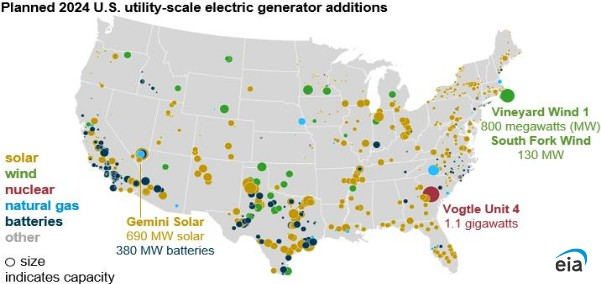
One of the largest renewable energy installations, Sun Bear, will be a solar facility in the 4-corners area in Colorado. This site was chosen for several reasons. It sits on a southward slope of ground, unobstructed sky, high annual solar irradiance [lots ofsunlight throughout the year], and proximity to existing transmission systems. See photo, Credit: Rick Engineering. This solar farm will be eight miles long and consist of two million solar panels with battery storage. It will cost $1.5 billion and produce peak power of 975 MW [megawatts] and will power 250,000 homes.
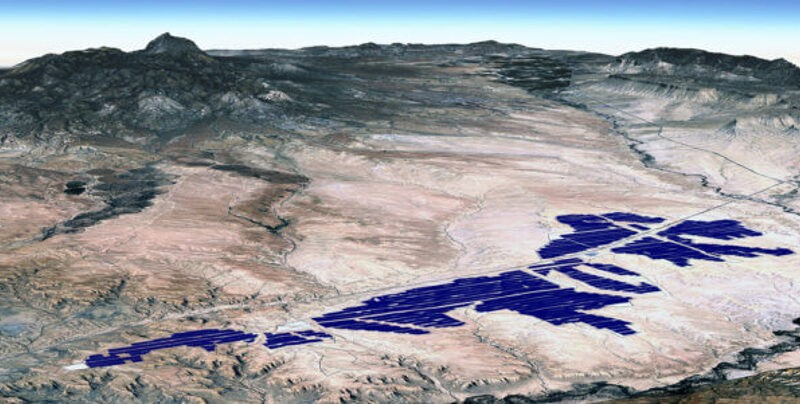
The land belongs to the Ute Mountain Tribe who will receive a percentage of the revenue generated. Importantly, tribal members were a part of the planning process and will have access to jobs and other benefits from this project. It is expected that the project will be complete by 2026!
The other main contributor to our GHG emissions is from ICE’s [internal combustion engines.] The graph labeled “ZEV share of total light-duty vehicle sales,” [Zero Emission Vehicles], illustrates the remarkable growth in annual sales since 2020. The last 3 years have seen sales growth of about 50% per year: an amazing increase.
This re-tooling of Detroit’s manufacturing plants in the U.S. is coming a bit late. BYD, a Chinese company, has an enormous lead in making many less expensive full electric models. This company is a global EV leader and Detroit will have its hands full catching up.
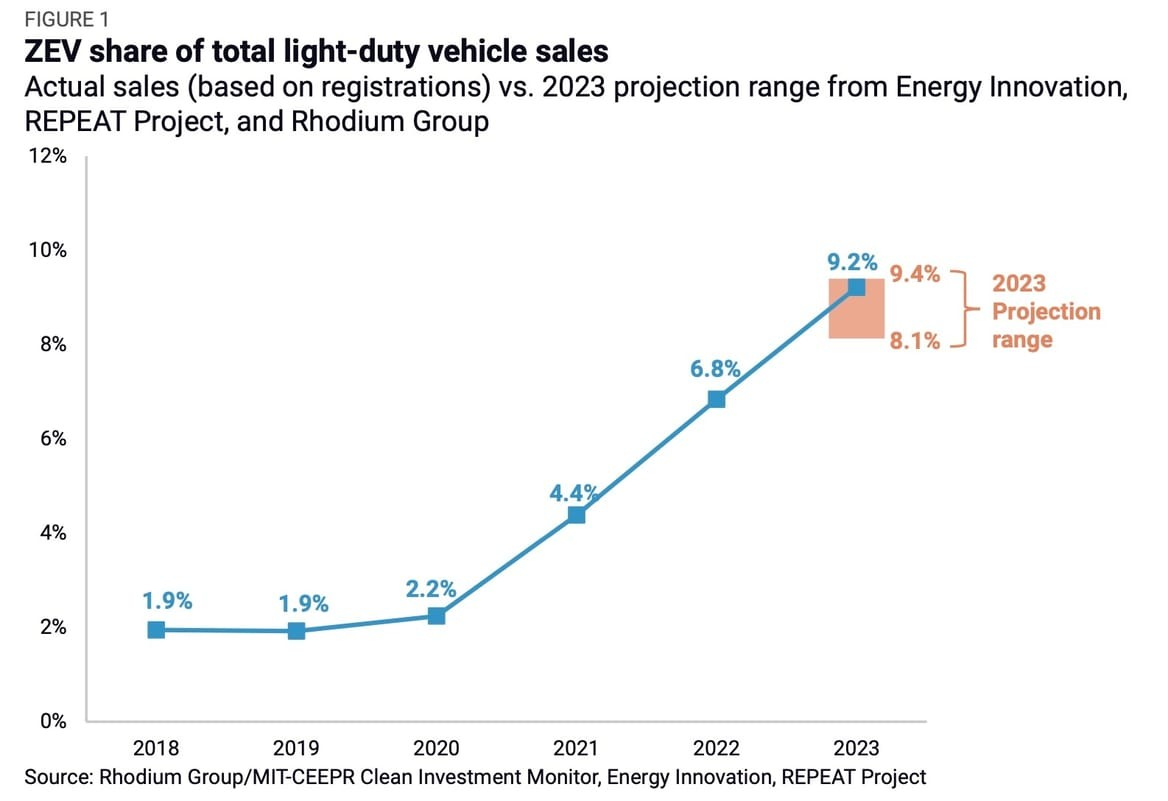
And, so it goes.
The scientific career of Raymond N. Johnson, Ph.D., spanned 30 years in research and development as an organic/analytical chemist. He is currently founder and director of the Institute of Climate Studies USA (www.ICSUSA.org). Climate Science is published monthly.
Menu



